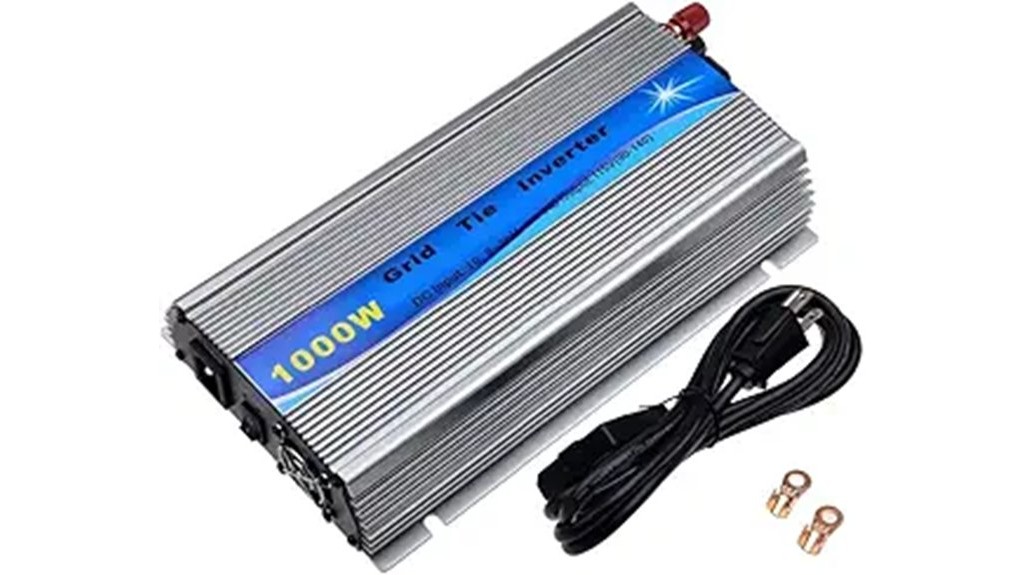When I first encountered the Y&H 1000W Grid Tie Inverter, I was intrigued by its compact design and high efficiency claims. However, as I explored user feedback, I noticed a mix of experiences that raised some questions for me. Many reported performance issues that didn’t quite match the specifications. If you’re considering this inverter, you might want to weigh the pros and cons carefully before making a decision. Let’s take a closer look together.
Product Specifications and Features
When it comes to solar power solutions, the Y&H 1000W Grid Tie Inverter stands out with its impressive specifications and features.
This stackable MPPT pure sine wave inverter operates within a DC input voltage range of 30-45V, providing an output voltage of 90-140V. It works with 24V, 30V, and 36V PV panels, boasting a remarkable output efficiency exceeding 99%.
Weighing just 5.38 pounds and measuring 13 x 6 x 3 inches, it’s compact and easy to handle.
With a customer rating of 3.8 from 170 reviews, it’s clear this inverter has made its mark in the solar market.
Installation Guidelines
Installing the Y&H 1000W Grid Tie Inverter requires careful attention to detail to confirm peak performance and safety.
First, verify the solar panel voltage matches the inverter’s input specifications; keeping the Vmp within the MPPT range is essential.
I recommend avoiding connections to solar controller load ports and using an appropriate wire gauge to prevent power loss and overheating.
Secure all DC connections tightly to avoid short circuits.
Finally, steer clear of using a bidirectional meter, as it can increase your electricity costs.
Following these guidelines will help you achieve a smooth and efficient installation process.
Performance Analysis
Although the Y&H 1000W Grid Tie Inverter boasts a rated capacity of 1000W, my experience and user feedback suggest that actual performance often falls short.
During peak hours, I’ve noticed outputs around 300-400 watts, which is considerably less than expected. Efficiency tends to drop with higher input wattage, likely due to heat loss in the wiring.
Additionally, I’ve encountered issues where the inverter occasionally fails to function properly, leading to concerns about reliability. It can run hot, and some users even report burning smells, indicating potential problems that could impact its lifespan and overall performance.
User Experiences and Feedback
User feedback on the Y&H 1000W Grid Tie Inverter reveals a mixed bag of experiences.
I’ve seen users mention they only produce around 300-400 watts during peak hours, which is disappointing compared to the advertised capacity. Some reported issues like no output or faulty voltage, and a few even experienced burning smells after extended use.
It’s concerning that some inverters failed within just five months. While others found success integrating it with existing systems, I’d suggest caution if you’re new to solar setups.
Recommendations for Potential Buyers
When considering the Y&H 1000W Grid Tie Inverter, it’s important to weigh its strengths and limitations carefully.
I recommend evaluating your specific energy needs and ensuring your solar panel’s voltage aligns with the inverter’s MPPT range. If you’re planning to run over 400 watts, consider upgrading your wire gauge to prevent heat loss.
While it can help offset electricity costs, don’t rely on it as a long-term solar solution.
Be cautious if you lack experience with grid-tied systems, as integration can be tricky.
Finally, check the warranty terms; it’s essential for peace of mind with your investment.

